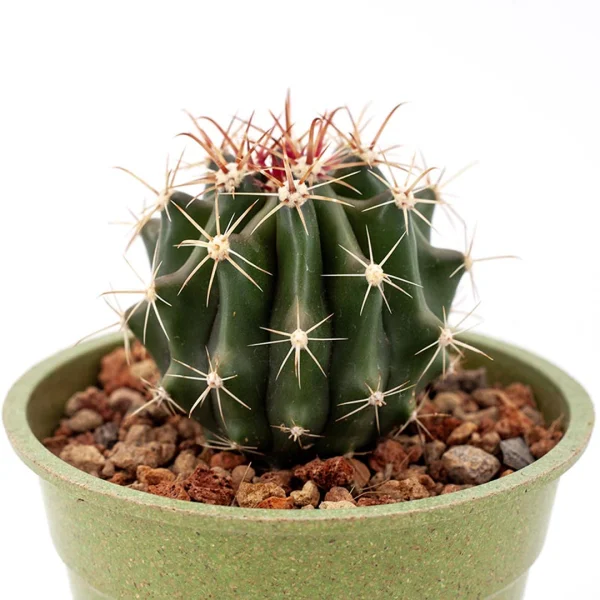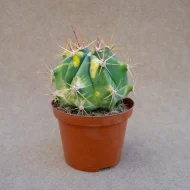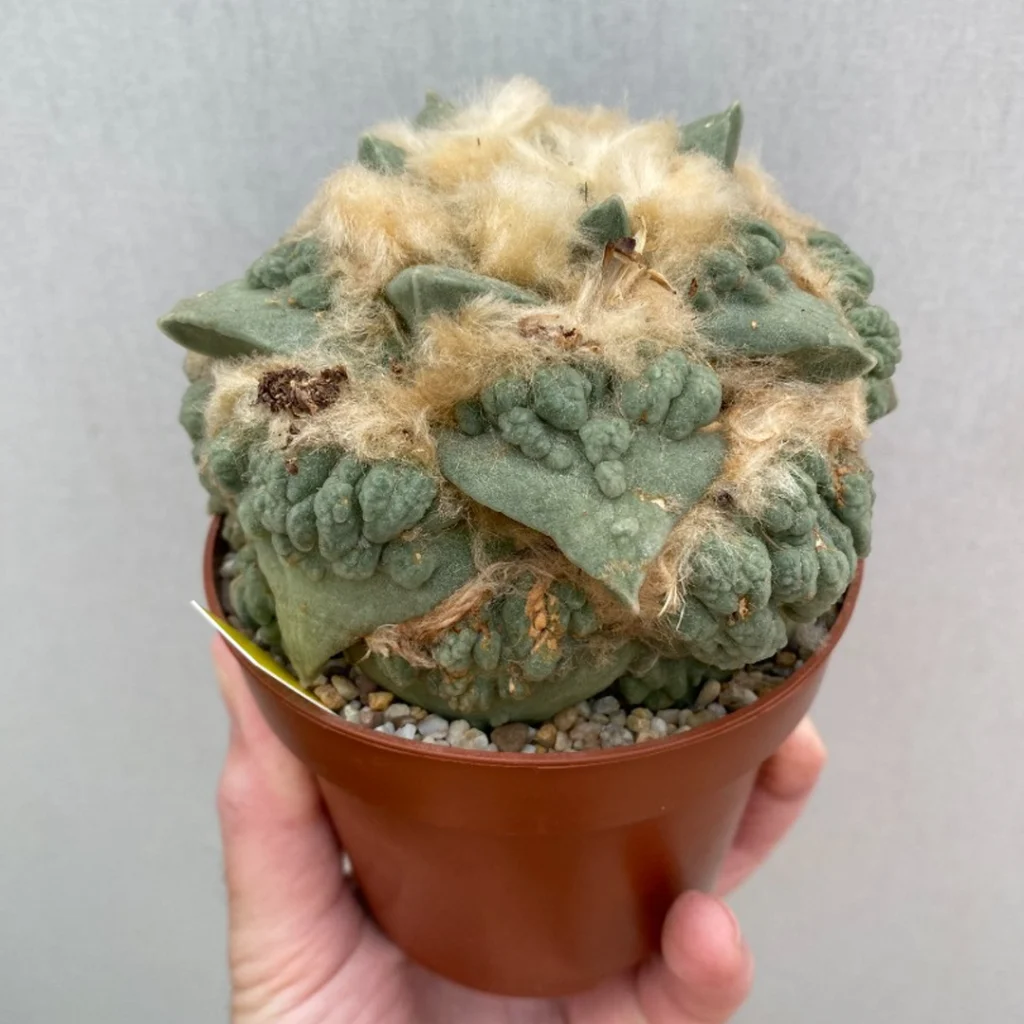Ferocactus glaucescens f. inermis variegated is a striking variety of the Ferocactus glaucescens species, distinguished by its spineless form (inermis) and vibrant variegated patterns. Native to Mexico’s arid regions, this rare form boasts yellow, cream, and green striped patterns on its smooth, rounded body, making it a prized addition to any cactus collection.
This cactus features the same ribbed structure characteristic of the genus but lacks the fierce spines of its relatives, giving it a softer aesthetic while retaining its rugged charm. During the growing season, it produces small, cup-shaped yellow flowers at the crown, adding to its ornamental allure.
How to Care
- Light: Provide bright, indirect sunlight or filtered light. While tolerant of full sun, prolonged exposure may cause discoloration in the variegated areas.
- Watering: Water sparingly, allowing the soil to dry completely between waterings. Reduce watering during winter dormancy.
- Soil: Use a fast-draining cactus mix with added sand or pumice to prevent root rot.
- Temperature: Thrives in temperatures between 20°C to 35°C (68°F to 95°F). Protect from frost; keep above 10°C (50°F).
- Fertilizer: Feed with a balanced cactus fertilizer diluted to half-strength during the active growing season (spring and summer). Avoid over-fertilization to maintain its variegation.
- Repotting: Repot every 3-4 years or when the plant outgrows its pot. Use care to avoid damaging the plant.
- Propagation: Propagate via seeds or offsets (if present), though maintaining variegation may be challenging from seed.



















